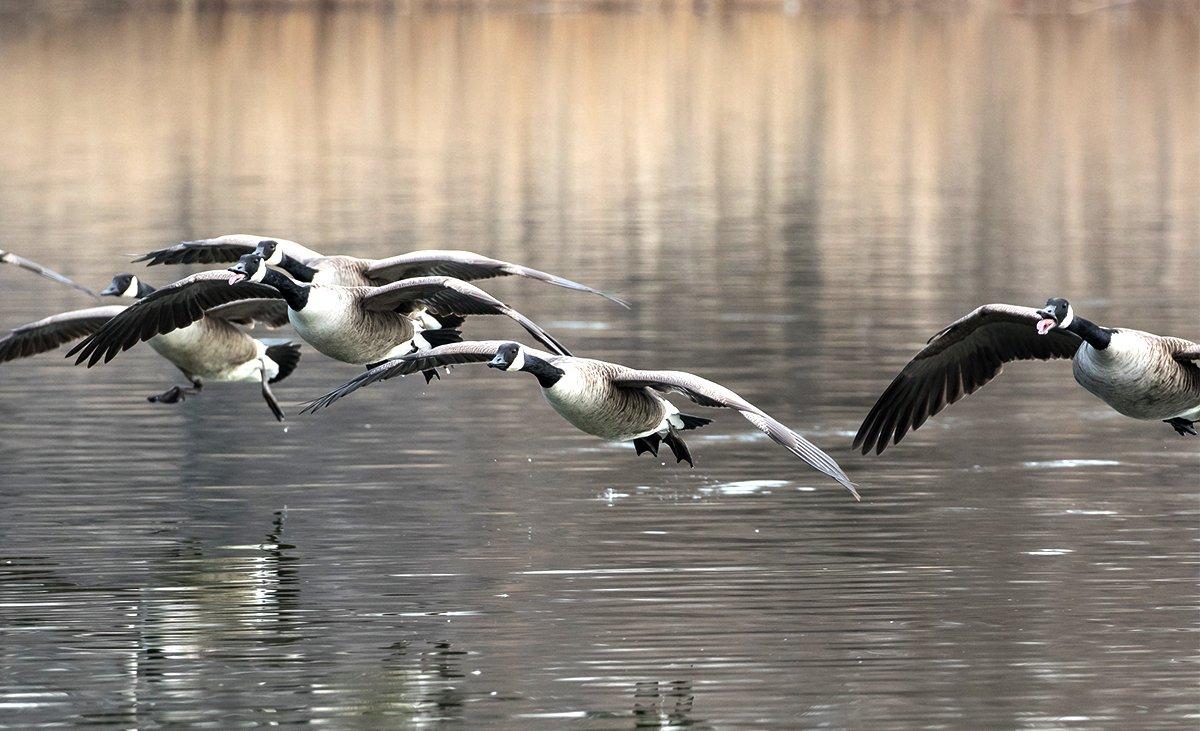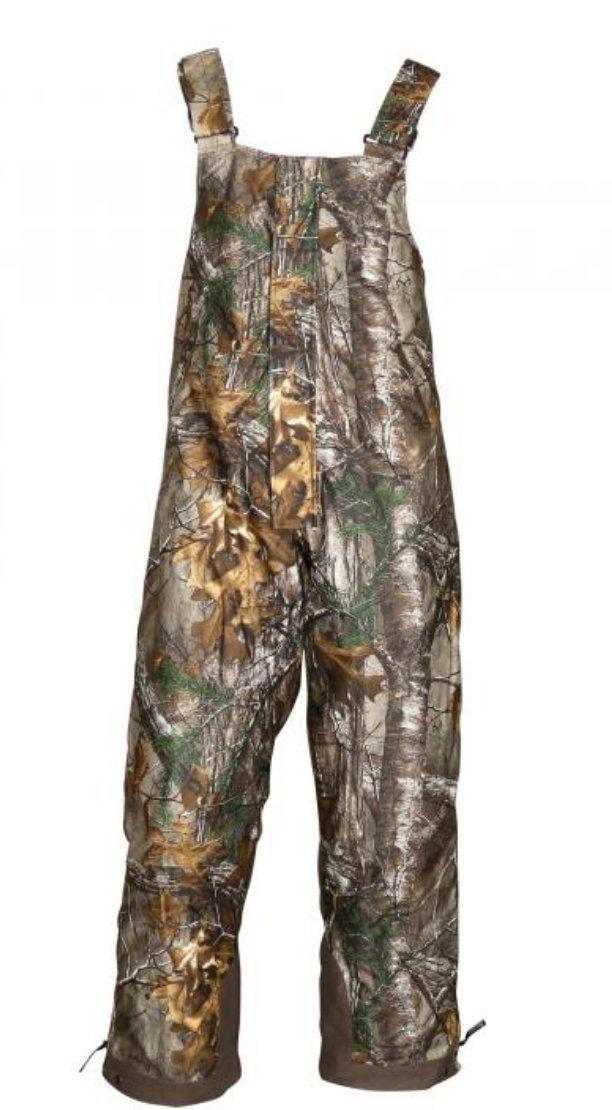Fields Get All the Attention, but Hunting Honkers Over Water Can be Productive
When it comes to hunting Canada geese — from Portland, Maine, to Portland, Oregon — dry field-hunting gets 95 percent of the airtime. Corn stubble. Wheat stubble. Winter wheat. Rye grass. Drive out to the X, drop the blinds and decoys, set 'em up, hide the rigs and crawl into your hole to wait out the first bunch. Effective? Definitely, but it's getting a little, well, routine.
What you don't hear or read much about is gunning geese over their home turf: water. Truth is — and I'll admit these numbers are speculative — probably 75 percent or more of the nation's Canada goose hunters haven't spent time behind a water-based spread. And I'm not talking about jump-shooting a farm pond or sneaking up over the edge of a stock tank, both of which can be effective. No, I'm talking about purposely setting a rig on water. If it's such a good strategy, why don't more folks do it?
Years ago, three-time world champion duck caller Barnie Calef, who's no slouch when it comes to hunting Canada geese throughout the Midwest, explained the non-popularity of hunting honkers over water.
It's labor intensive, he said. Water spreads for geese are a lot of work. We'll put out 30 or 40 Bigfoot floaters, and to carry those, along with all the duck decoys we need, is just cramming the boats full. Too, guys have always hunted the fields and let the birds have the water. But so many of our refuges (today) have that water. Opportunity might come into play, too. On the Missouri River where we hunt (Yankton, South Dakota), it's classic mallard and honker water. It's vast and open. Go somewhere else and guys aren't going to have water-based opportunities like those.
Which brings me to this point, and let's get it out of the way immediately. When I'm talking water, I don't mean shooting an established or traditional roosting area. A night roost area on the final day or two of the season? Maybe, but there's a huge difference between setting a spread on a loafing area — our target — and busting a roost mid-season. Do the latter, and your fellow hunters will set the Internet ablaze as they roast you for everything from kicking puppies to stealing from the Girl Scouts.
That behind us, let's dive into a crash course in hunting Canadas over water. The most important consideration, as in any waterfowling situation, is to be flexible. Improvise, adjust and adapt. Rule A won't always work. Nor will rules B through Z. Watch and learn. The birds will tell you everything you're doing wrong — and the few things you're doing right.
The Where
In the 38 years since I shot my first Canada, I've set water spreads on temporary sheet water, pasture ponds, huge impoundments and tributary streams to the Mississippi River. I've hunted them on tidal marshes, major river systems such as the Columbia, and, come winter, over holes cut in the ice with a chainsaw. Geese on water are where you find 'em, and where you find them is ordinarily a darn good place to hunt them.
Some guys, including Calef, target honkers on expansive stretches of water; the Missouri, Mississippi, Ohio and Columbia rivers. Any of the nation's larger impoundments, lakes, and reservoirs can also provide excellent hunting opportunities. However, the key to success on larger waters, as on dry ground, is in-depth scouting and finding the X. You don't want a place close to the X but the spot where the birds want to be — a sandbar, quiet eddy out of the current, secluded backwater bay or a narrow point jutting into the main lake. These are loafing areas; water spots where the birds lounge around until they go to feed or between feeding sessions. With bigger water, it's usually necessary to invest windshield time and scout. Find birds on a feed in the morning — and if you can get permission to hunt that feed, more power to you — and follow the flights back to their mid-morning loafing spot. Again, not the general area, but the X.
I like hunting water-based Canadas over smaller territory. Growing up in the Midwest, I had access to countless 2- to 3-acre farm and pasture ponds, as well as miles of interior rivers such as Ohio's Mahoning and the Wapsipinicon in eastern Iowa. Typically, flocks on such waters were smaller, averaging two- to four-dozen birds. An exception occurred during the late late-season after ice-up, when the rivers might hold 200 geese or more. I was familiar with many of the ponds because I fished them for years. I discovered others the 21st century way via Google Earth, and then cross-referencing the nearest house address or the parcel with the county tax assessor's website to, hopefully, name the landowner, and then knocking on a door. Then, one or two friends and I would hunt each pond once a week throughout the season. By assembling a stable of a dozen or more options, I always had plenty of fresh places to throw out my plastics.
Water-Based Spreads
No rocket science here. Decoy numbers depend on several factors. The size of the water, how you'll transport decoys and how many geese are regularly using the area.
Larger water usually means more birds, which translates into more decoys and a boat. Calef said he'll typically run 30 to 40 goose floaters in addition to his duck decoys. That — and because his spot is the Missouri River — spells boat. Goose hunters on the Columbia River often set three- to four-dozen floaters. On the Ohio River, calling champion Field Hudnall also rigs three- to four-dozen decoys. Body posture? A variety of head/neck positions, including sleepers, preeners and butt-up feeders make the rig look more natural, and I'd recommend this realistic look versus the old-school all-heads-up spread.
On 1-1/2-acre farm ponds, I'll set eight to 12 floaters along with a half dozen dry-ground full-bodies at the water's edge, if the shoreline allows. Sometimes, I've gone to the trouble of setting dry-ground full-bodies around the blinds, behind me and to the sides. Today, not so much. Often, I pack my rig into the field on foot via a deer cart, so I've downsized to make transportation afield less of a back-breaker. Also, small ponds usually mean smaller groups of birds. Why set 40 when eight will work?
The shape of my spread also depends on the water. With an acre-plus pond, I don't worry about any configuration. I'm not trying to direct traffic with eight to 12 decoys. And on a 1-acre pond, if birds commit, there's an awfully good chance they'll be in range when they do. Larger waters, such as Calef's Missouri River, require that more thought and technique be put into the rig. Canada geese don't care to fly over geese on the water, fearing —my theory — an unexpected takeoff and resulting mid-air collision. That said, my larger rig of 30 to 50 floaters will be set in a rough horseshoe, with the bend upwind of my hide, the inside leg tight to the blind and the other flared outward a bit. This arrangement, I've found, helps direct incoming traffic.
Calling Over Water
The general rule for calling Canadas over water is simple: Be subtle and low-key. Geese coming into a feed, such as a cornfield, are noisy and excited. So are birds on the ground. The birds in the air are announcing their intent, and the geese on the feed are saying, stay back. Often, it's a cacophony of sound — a situation tailor-made for multiple callers. Lots of loud honks, clucks, double-clucks, moans, spit-notes —the full-meal deal. If the sound has a name, and even if it doesn't, there's a good chance a ground-pounder will be throwing it out there.
Rocky Prohunter Reversible Waterproof Insulated Bib
Conversely, Canadas working water are laid back. They're calm. They're just looking to relax. Likewise, the birds are already settled. Honk. Cluck. Honk. Cluck. Listen to the birds. Let them know you're there without being sassy or confrontational. And remember that water amplifies sound. Blow it up and out, but tone it down. Sounds bounced off the water can be misleading to approaching birds and louder than you think. A 1-acre pond? Knock it down another notch.
Sure, we like to stay nice and dry, stretched out prone in our full-frame layout blinds with a Thermos of coffee and bag of snacks, surrounded by seven-dozen full-bodies. When it works, it's magical. But sometimes, you have to meet geese halfway — on their terms, in their house. And that's when it's time to dust off the floaters and step into the water.
Click here for more Realtree waterfowl hunting content. And check us out on Facebook.









